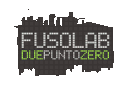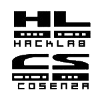Particolarità della rete wireless di Roma
Nell'ambito della MANET costruita a Roma, per sfruttare al meglio le caratteristiche di densità dei nodi presenti e tenere anche conto delle distanze relative, l'infrastruttura della rete Ninux.org si è andata modificando rispetto alla impostazione iniziale, che privilegiava collegamenti ad-hoc con hardware e software non codificato.
Attualmente pertanto il gruppo Ninux.org di Roma si è dato le seguenti regole:
Ci sono tre tipologie di nodi: backbone, foglia e hotspot.
I nodi di backbone, tipicamente posti sul tetto di un edificio alto, attualmente si basano su apparati piuttosto direzionali, molto performanti e che realizzano link punto-punto o punto-multipunto con tecnologia omogenea. Questi apparati funzionalmente integrano un router e un'antenna a 5 GHz. I nodi di backbone sono l'ossatura della rete, quella che tendenzialmente (sempre senza SLA) non deve andare mai offline.
Un nodo foglia è caratterizzato per avere visibilità verso un nodo di backbone. Un membro della Community che si vuole installare un nodo foglia acquista dove vuole un apparato analogo a quello che montiamo per i backbone (il modello lo suggeriamo noi, sempre per evitare di buttare i soldi) e poi se lo configura sulla base delle informazioni pubblicate, ovvero ci viene a trovare al Fusolab e lo aiutiamo a configurarselo. L'installazione dipende da sito a sito e mediamente l'intervento necessario è assimilabile a quello per una parabola TV sat.
Il piano di indirizzamento IP di questi nodi è pubblicato sul nostro sito e viene stabilito sulla base di alcuni semplici criteri; questi nodi montano OLSR (per stabilire le rotte IPv4 e IPv6) e non montano DHCP. Le linee verdi che vedi sulla mappa sono realizzate tra nodi di backbone e/o nodi foglia. Anche la collocazione dei nodi è pubblicata sul nostro map server: Ninux.org non è una entità clandestina.
Dietro il nodo backbone o foglia c'è normalmente una LAN, che il proprietario del nodo si costruisce come vuole per dare connettività a Ninux.org nel proprio appartamento. A questa LAN il proprietario del nodo collega i PC locali, in modalità wired o wireless. La subnet corrispondente alla LAN, se questa deve poter interagire con il resto della rete Ninux.org, assume allora la forma 10.CAP.progressivo.0/24
Presso alcuni nodi di backbone o foglia a volte sono presenti anche degli HotSpot: questi sono apparati a 2.4 GHz, con l'antenna tipicamente posta in esterno, che invece irradiano un segnale in maniera omnidirezionale e che, disponendo di un server DHCP, consentono a chiunque di condividere temporaneamente i servizi di Ninux.org con il proprio portatile o smartphone.
La presenza di questi ospiti della rete, che tipicamente non sono membri della Community, è uno dei nostri vanti. Ovviamente l'installazione di un HotSpot presso il proprio nodo è su base volontaria.








